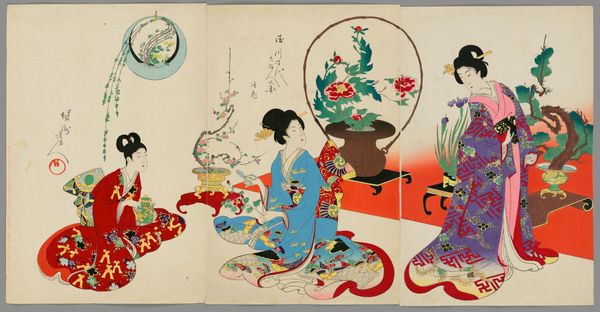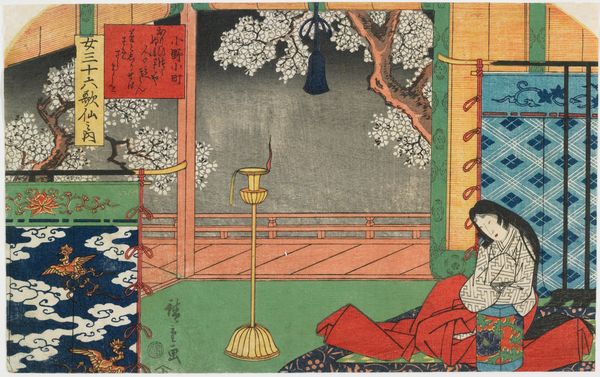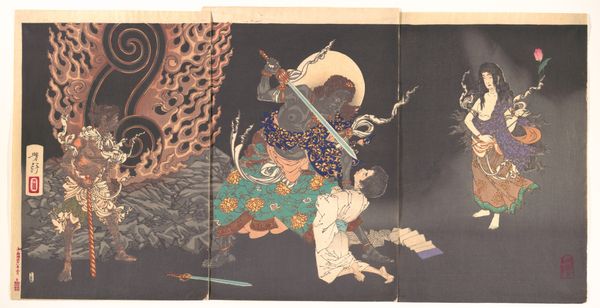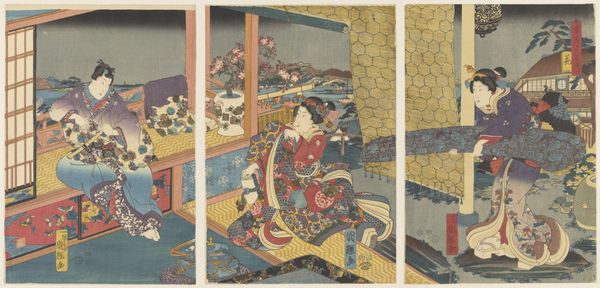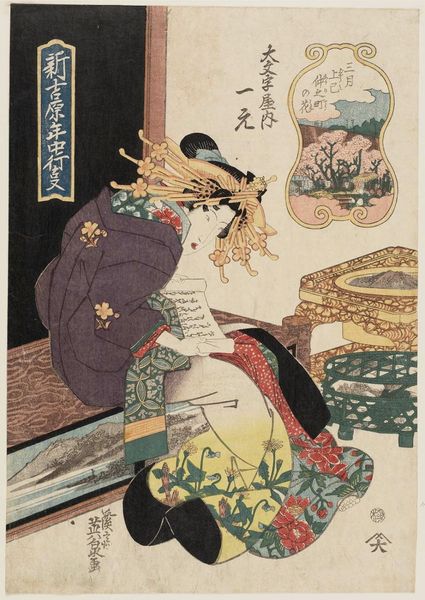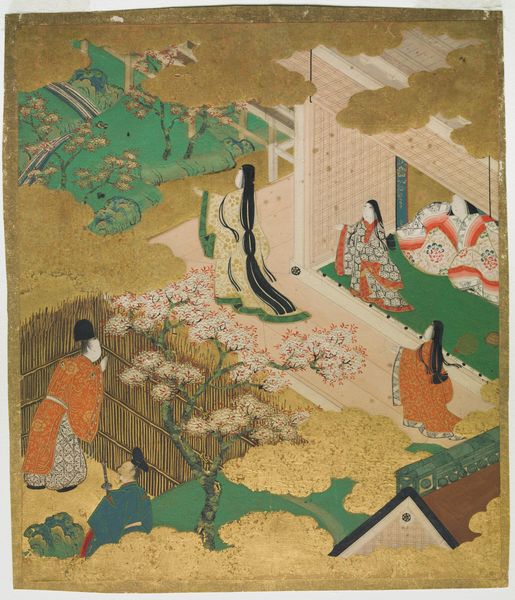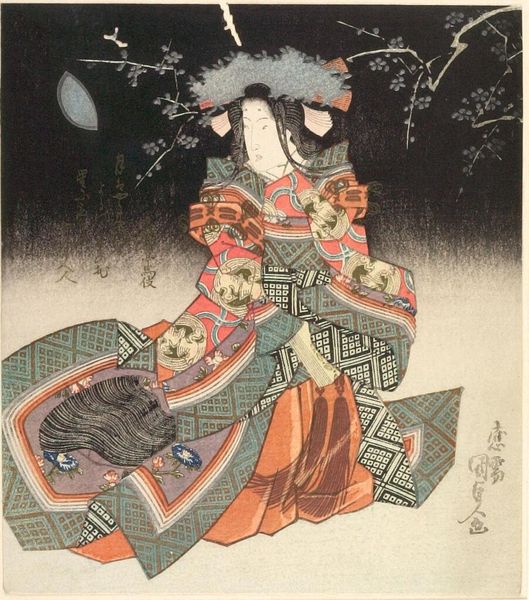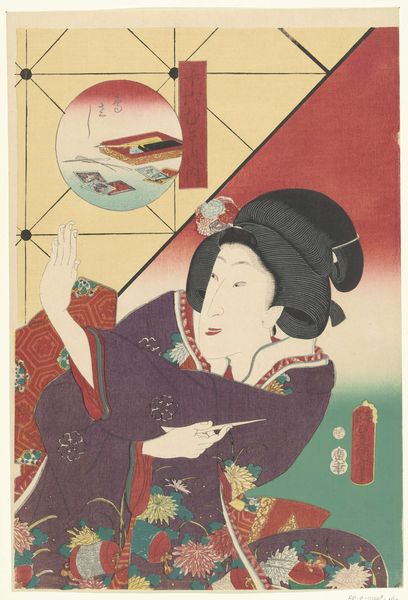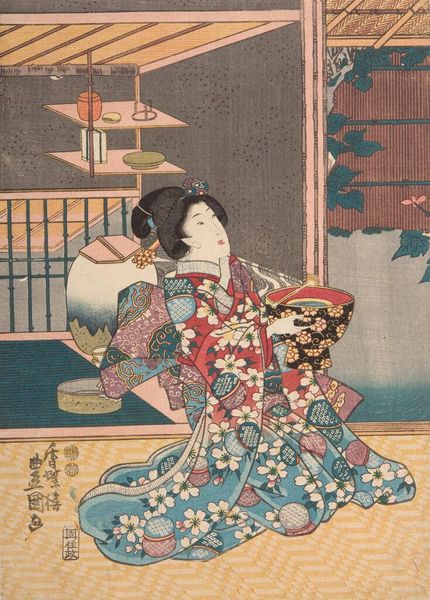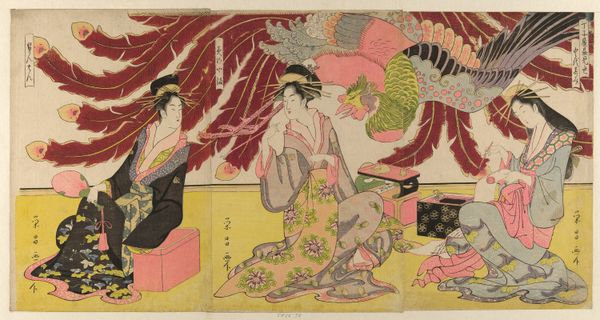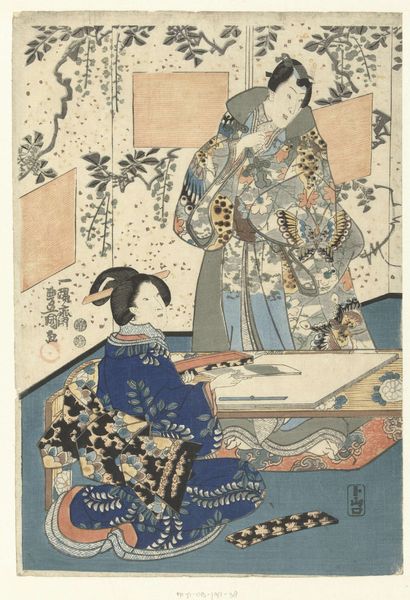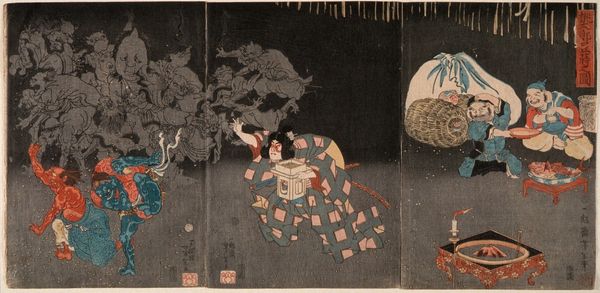
Copyright: Public Domain: Artvee
Curator: This artwork is a triptych woodblock print titled "A Woman Saving the Nation; A Chronicle of Great Peace" from 1886, created by Tsukioka Yoshitoshi. It’s quite an elaborate scene. Editor: Elaborate is right. My initial reaction is a sense of confined decadence – rich patterns, but also an undeniable feeling of entrapment. The colors, though beautiful, seem to clash in a way that hints at underlying tension. Curator: I think the opulence underscores Yoshitoshi's critique of the period. Let’s consider the socio-political context. The late 19th century Meiji Restoration brought about rapid modernization and Westernization in Japan, but it also led to social upheaval and anxieties about national identity. These woodblock prints played a critical public role. Editor: So, these anxieties manifest in the image how? Curator: Note how each figure seems caught within their own isolated tableau: a woman with a sword, a reclining figure, and another figure that appears to be sleeping. This sense of disconnectedness within close proximity can reflect the period's political uncertainty. Editor: You can really read that visually? To me, the sleeping figure, especially, is incredibly sexualized and evokes ideas of orientalism and power structures... Are there social classes presented here? Curator: It is tempting to interpret the sleeping figure in such light, and yes. The print depicts the Ansei Purge, which was carried out by the Tokugawa shogunate against its political opposition. These woodblock prints often aimed at the lower social strata. These were a direct connection to culture and allowed many in Japanese society to share artwork despite the high illiteracy rate during the time. Editor: So the characters might depict historical people of significance during that event? Curator: Precisely, and Yoshitoshi was known for imbuing his ukiyo-e prints with a strong narrative element. By representing such controversial moments of historical events, Yoshitoshi offers an alternative perspective on them. The imagery became a social conversation starter at the time of creation. Editor: Fascinating how the beauty and detail, a feature that I immediately admired, masks deeper questions around political strife and inequality. Thanks for sharing insights that changed my initial viewing experience. Curator: And your observation rightly questions whether the woman depicted actually rescued anyone, or simply reinforced the very structures she sought to change. These kinds of pieces allow for the consideration of themes that endure through time.
Comments
No comments
Be the first to comment and join the conversation on the ultimate creative platform.

